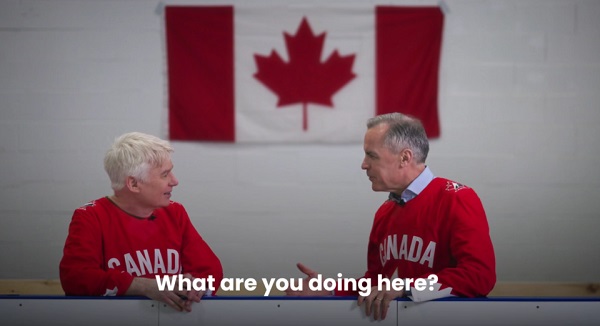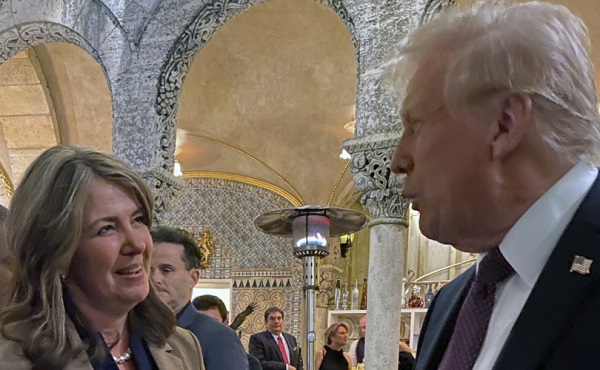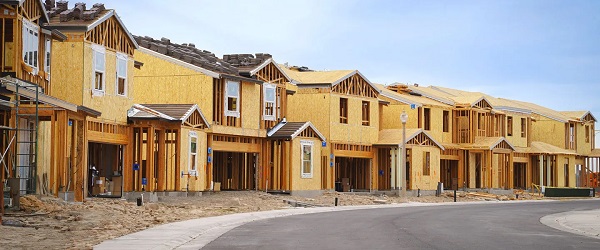Opinion
Progressive hypocrisy laid bare in We Have Never Been Woke

This article supplied by Troy Media.
 By Pat Murphy
By Pat Murphy
Musa Al-Gharbi delivers a sharp, accessible critique of the contradictions within progressive politics
Musa Al-Gharbi is an African-American sociologist and a convert to Islam. His written work has appeared in an array of academic outlets as well as
prestigious mainstream publications such as The Guardian, the New York Times, the Washington Post and the Atlantic. His first book, We Have Never Been Woke (2024), has a simple bottom line. To quote: “… you don’t observe what is important to someone by what they say but rather by what they do, and by how they structure their lives.”
When he cast his first presidential vote in 2004, Al-Gharbi’s worldview was uncomplicated. Social evils were the fault of “those damn Republicans!” Life would be beautiful if everyone could be “more like the enlightened denizens of New York.” While events over the next dozen years moderated that perspective, moving from Arizona in 2016 to embark on a sociology PhD at Columbia caused him to shed whatever vestiges remained.
What he found on New York’s Upper West Side was a progressive bastion with “disposable servants,” an environment given to “casually exploiting
and discarding the vulnerable, desperate and disadvantaged. And it’s largely Democratic voting professionals who take advantage of them—even as they conspicuously lament inequality.”
Two particular events are worth noting. As an elite Ivy League university, Columbia’s student body mostly comes from an affluent, if not downright wealthy, background. Those who don’t are likely to leave with excellent economic prospects.
But that privilege notwithstanding, Donald Trump’s surprise 2016 election victory traumatized many students to the extent that they couldn’t do tests or homework and needed time off. For its part, the university was happy to oblige. Meanwhile, little consideration was given to the support workers—
disproportionately immigrants and minorities—who were purportedly most at risk from Trump’s victory.
Al-Gharbi has this to say: “Although the classrooms were full of tears in the days that followed, one never saw, say, the janitors making a scene, sobbing
uncontrollably about politics as they scrubbed rich kids’ messes out of the toilets. They just showed up to work the next day and did their jobs. The juxtaposition was sobering.”
Another revealing situation transpired during the pandemic when many vacant hotels were being converted into temporary housing in order to relieve the pressure in homeless shelters. In an area that had voted 9 to 1 in favour of Hillary Clinton, Upper West Side liberals successfully lobbied the city to spare their neighbourhoods.
Al-Gharbi is again trenchant: “That is, in order to alleviate risks and inconveniences for themselves, they forced less advantaged people, who were
already bearing the brunt of most other pandemic-related risks and disruptions, to also deal with any challenges related to hosting large numbers of unsheltered individuals in their communities. And they did all this while evoking social justice discourse, often pretending their primary concern was for homeless people themselves.”
Like many commentators, Al-Gharbi notes the increasing attitudinal cleavage between those who work with symbols—words, numbers, ideas and other
abstractions—and those whose work is tied to physical goods and services. In his assessment, the symbolic professions “tend to be especially ideological, conformist, and extreme relative to most other Americans.” For instance, climate activists “are mostly female (61 per cent) and almost entirely white (93 per cent). More than nine out of 10 climate activists have at least a BA, and more than a third possess a terminal degree.”
Generally speaking, the symbolic class is the primary beneficiary of the increasing economic inequality they purport to deplore. Stir in the fact that they have largely captured the Democratic Party and you go some distance towards explaining the gradual migration of working-class voters—and not just white ones—towards the Republicans. The concerns that matter most in daily life are simply different. Accordingly, expectations, or hopes of amelioration, from the political system focus on different things. What’s top of mind for symbolic professionals doesn’t similarly resonate with everyone else.
To be clear, Al-Gharbi doesn’t question progressive sincerity. But he does draw a distinction between sincerity and importance. Believing in principle isn’t the same thing as acting on that principle when your own immediate interests are in play. To give him the last word: “If something is valuable to a person, truly central to their being, they make room for it. They make sacrifices for it.”
Our Verdict: ★★★★☆
A sharp, accessible and often sobering critique of the gap between progressive ideals and actions. Al-Gharbi’s mix of personal insight and data makes the book engaging for general readers and thought-provoking for anyone interested in contemporary politics and culture.
Troy Media empowers Canadian community news outlets by providing independent, insightful analysis and commentary. Our mission is to support local media in helping Canadians stay informed and engaged by delivering reliable content that strengthens community connections and deepens understanding across the country
Bruce Dowbiggin
Where Carney’s Canada Now Stands : Elbows Up. Pants Down.

Our weekly Monday column is nominally a sports column. But sometimes we are lured by a sporting theme other than on the field. And with the capitulation of Mark Carney’s cringeworthy Elbows Up theme this week we can now safely reflect on the impact of the nation’s hockey obsession on tariff wars.
For those who don’t know by now, Carney’s Elbows Up meme popularized in cringeworthy commercials with actor Mike Myers was a reference to going into the corners with the legendary Gordie Howe. Legends abound on the lethality of Howe’s elbows that separated opponents from their senses. Thus, the message of Carney and Myers in Team Canada jerseys quoting Mr. Hockey was as simple as it was ridiculous.
Canada was going to go into the corner to separate Donald Trump from his tariffs? How? Carney has boasted of his hockey savvy as a goalie for Harvard. Where other nations were collapsing Carney’s Canada promised to be a stout backstop. 51st State? Hah! Locking arms with Myers and Doug Ford, Carney would show the Americans what Canadians are made of. At least that’s what they said in the election campaign to restore the Liberal brand to the nation.

The hockey theme was buttressed by the emotional victory by Team Canada over Team USA in February’s Four Nations Tournament. Having been filleted in the round-robin by the Yanks, Canada won the final game, reinforcing the nation’s dominance in a sport most Americans ignore 365 days a year. To those looking for any reason to anger Trump (hello, Andrew Coyne) it seemed like destiny for the Elbows Up crew.
As an example of the Team Canada approach Carney and his paid media wind therapists savaged Alberta premier Danielle Smith for trying build bridges with the Americans. Smith had the idea there was more to be gained from energy negotiations than from sulking. Traitor! They cried when she was seen with Trump. Consorting with the Cheeto was tantamount to selling nuclear secrets.
Elbows Up Canada, like China, would inflict counter tariffs on the U.S. after a decade of Justin Trudeau frippery. It would shut down the accusations that Canada was now a benchwarmer in global affairs. It never occurred to Team Carney or the Boomer midwits who elected him that launching a trade war against a nation whose economy was ten times the size of Canada’s might be a seriously bad idea. (Like hoping to wear down the Russian military.) Anyone pointing out this small problem was immediately denounced as hating hockey, ergo hating Canada.

To further illustrate his hockey pluck Carney’s backers bragged that the former head of the Bank of Canada and Bank of England was a skilled negotiator who would wipe the floor in negotiations with the erratic Trump. Nobody gets away with publicly declaring a post-Trudeau Canada as a failed state that should ally with the U.S. The Americans will come running to Canada when they want water, oil, aluminum, steel and maple syrup.
Then a funny thing happened. While Canada stood by, Zambonis running, ready to take it to overtime, the Americans simply ignored the taunts. Trump acted as if Elbows Up was a mirage. As trade deals were announced with other nations and international meetings convened, Carney’s Canada was left outside. In spite of the tough talk on tariffs, a blasé Trump whacked Canada with 35 percent tariffs.
The meme of Carney as a potted plant at the Ukraine White House summit came to epitomize the afterthought that is post-Trudeau Canada in this climate. Inspired by their allies at CNN, MSNBC, the New York Times and the Washington Post, Canada’s purchased media fought back with all their favoured/ debunked Russian conspiracy theories and stories of Trump’s alleged mental incapacities. To no avail.
At just the moment that embarrassment was too great for even Team Carney’s most fervent media pals, Trump last week summoned him like a call-up from the minors to be told how it was going to be. Suddenly the implacable Carney was declaring how swell it was that Canada had the best treaty in the world. Elbows Up had suddenly become Pants Down.
Of course the beaming banker acted as if it was all part of some master plan he’d worked out between periods of the game with USA. Sure, his bluster about going into the corners was all bluff, no stuff. The Master Negotiator thing was all a cover for him to reduce government spending, re-commit to the futile climate war and (don’t tell anybody) recognize Palestine as a state in the near future.
Sure. Go with that. Anyone wanting an apology from the Potted Plant will wait a long time for satisfaction. For while Liberals talk a tough game they don’t talk at all when they’re been exposed. Even more sepulchral are the media that so readily grabbed the Elbows Up hustle to defeat Pierre Poilievre. Remember the Little Trump jibes? The Sloganeer slurs? The riding defeat?
Now that Trump had blocked their righteous elbow with a right cross they’re acting as if nothing is wrong. They’re off chasing stories about Poilievre being parachuted into an Alberta riding or Trump with Jeffrey Epstein. They’re reviving the murdered Rez babies hoax. And they’re ignoring international concerns about money laundering and drug trafficking.
Anything but the utter futility of Elbows Up and the next four years of watching the decline of Canada’s formerly respected position in the world. In heaven Gordie Howe is just shaking his head.
Bruce Dowbiggin @dowbboy is the editor of Not The Public Broadcaster A two-time winner of the Gemini Award as Canada’s top television sports broadcaster, his new book Deal With It: The Trades That Stunned The NHL And Changed hockey is now available on Amazon. Inexact Science: The Six Most Compelling Draft Years In NHL History, his previous book with his son Evan, was voted the seventh-best professional hockey book of all time by bookauthority.org . His 2004 book Money Players was voted sixth best on the same list, and is available via brucedowbigginbooks.ca.
Education
Spending per K-12 student in Canada ranged from $13,494 in Alberta to $19,484 in Quebec in 2022/23

From the Fraser Institute
By Michael Zwaagstra, Max Shang and Milagros Palacios
Spending per student (kindergarten to grade 12) in Canada ranged from a low of $13,494 in Alberta to a high of $19,484 in Quebec in 2022/23, finds a
new study published by the Fraser Institute, an independent, non-partisan Canadian public policy think-tank.
Most people—parents included—don’t understand how much is being spent educating students in public schools across Canada, which is critical before parents begin to evaluate whether they’re getting good value for the money,” said Michael Zwaagstra, senior fellow with the Fraser Institute and co-author of Education Spending in Public Schools in Canada, 2025 Edition.
The study finds that inflation adjusted per student spending on public schools in Canada increased nationally by 5.9 per cent over between 2013/14 and 2022/23. A different way to think about this increase in spending is to analyze how much was required to offset changes in student enrolment and inflation. The analysis shows that over this time period (2013/14 to 2022/23) an additional $6.5 billion was spent over and above what was needed to compensate for more students and inflation.
The spending analysis also includes different categories such as compensation, capital and other spending as categorized by Statistics Canada. Compensation (salaries, wages, fringe benefits, and pensions) contributed the most to the total growth in spending on public schools from 2013/14 to 2022/23.
In total, Quebec experienced the largest increase at 40.6 per cent. Prince Edward Island (14.5 per cent) and Nova Scotia (10.8 per cent) experienced the next largest increases in spending per student, while Saskatchewan (-14.8 per cent), Alberta (-17.5 per cent), and Newfoundland & Labrador (-11.2 per cent) were the only provinces to experience meaningful declines during this same period.
“When it comes to our children’s education, it’s important to understand exactly what’s happening with spending in public schools, and, most importantly, to question how the money spent is being put to use,” said Zwaagstra.
Per student spending in public schools across the provinces 2022/23
Province Per-student dollars
Canada 16,579
Quebec 19,484
Prince Edward Island 17,475
New Brunswick 17,346
Manitoba 17,036
Nova Scotia 16,800
Ontario 16,164
Saskatchewan 15,774
British Columbia 15,116
Newfoundland &Labrador 14,190
Alberta 13,494
Education Spending in Public Schools in Canada, 2025 Edition
- Total education spending in public schools over the last 10 years increased from $63.0 billion in 2013/14 to $88.4 billion in 2022/23, a nominal increase of 40.3%.
- Per-student spending adjusted for inflation (price changes), increased by 5.9% nationally from 2013/14 to 2022/23.
- The highest inflation-adjusted spending increases (per student) occurred in the provinces of Quebec (40.6%), Prince Edward Island (14.5%), Nova Scotia (10.8%), and British Columbia (9.3%).
- Five provinces experienced decreases in inflation-adjusted per-student spending—Alberta (17.5%), Saskatchewan (14.8%), Newfoundland & Labrador (11.2%), Manitoba (3.0%), and Ontario (1.7%).
- Quebec had the second lowest level of per-student spending in public schools in 2013/14 and now has the highest. Prince Edward Island went from seventh in per-student spending to second highest.
- On the other hand, Saskatchewan went from the highest in per-student spending to seventh, and Alberta went from fifth highest to tenth, the lowest.
- Even though British Columbia recorded the fourth-highest growth in adjusted per-student spending, it still ranks eighth in per-student spending in Canada.
- Student enrolment across Canada increased by an average of 5.6% from 2013/14 to 2022/23. Only Newfoundland & Labrador saw a decrease in enrolment (4.9%).
- Compensation remains the largest and costliest aspect of education spending and has contributed the largest portion to the growth of total education spending in Canada.
-

 Addictions20 hours ago
Addictions20 hours agoWhy North America’s Drug Decriminalization Experiments Failed
-

 Business21 hours ago
Business21 hours agoDisney scrambles as young men reject DEI-filled franchises
-

 Alberta19 hours ago
Alberta19 hours agoGood Sense Beats Team Canada’s Hysteria
-

 Health18 hours ago
Health18 hours agoThe Hidden Risk of an Abortion
-

 Alberta14 hours ago
Alberta14 hours agoNew Calgary plant to produce luxury vinyl flooring with Alberta oil and gas
-

 Business17 hours ago
Business17 hours agoCarney’s housing plan will likely spend a lot for very little
-

 COVID-1915 hours ago
COVID-1915 hours agoSudden deaths, incapacitations soar among COVID-jabbed airline pilots: report
-

 Bruce Dowbiggin16 hours ago
Bruce Dowbiggin16 hours agoWhere Carney’s Canada Now Stands : Elbows Up. Pants Down.





